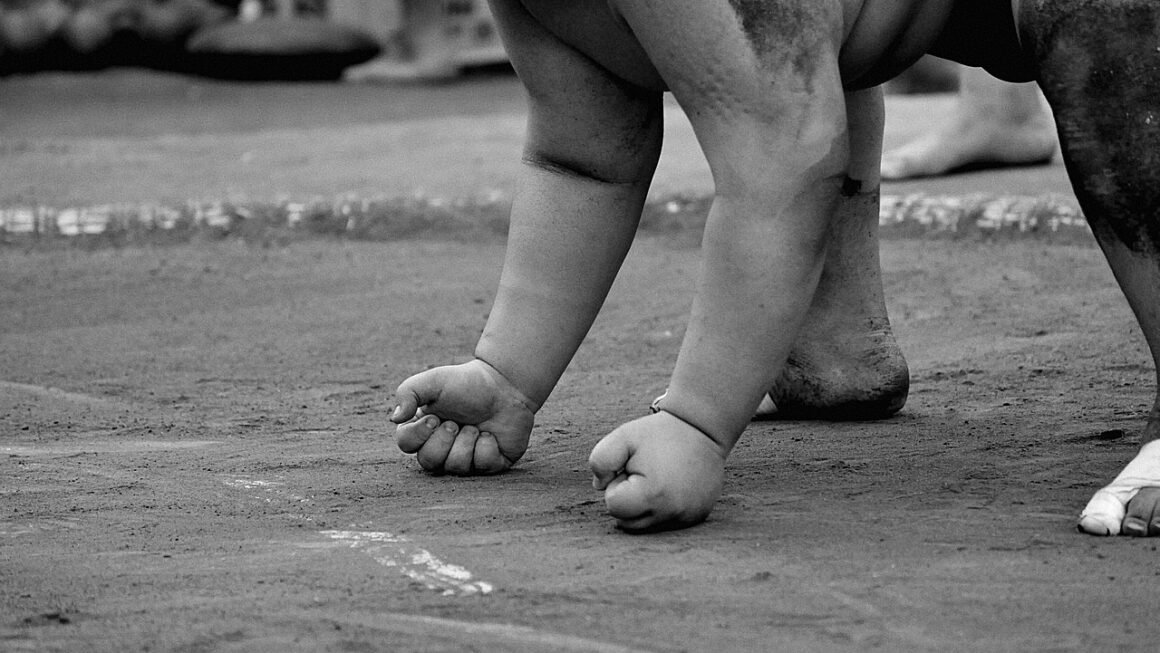Imagine a workout that torches calories, builds incredible strength, and teaches you practical self-defense skills all in one exhilarating package. That’s the power of kickboxing! This dynamic martial art-inspired fitness regimen has exploded in popularity, and for good reason. It’s more than just punches and kicks; it’s a total body transformation, a confidence booster, and a stress reliever all rolled into one. Let’s delve into the world of kickboxing and discover why it’s the perfect workout for you.
What is Kickboxing?
The Origins and Evolution of Kickboxing
Kickboxing, as we know it today, is a hybrid combat sport that combines elements from various martial arts. Its roots are diverse, drawing from:
- Karate: Providing the foundational striking techniques.
- Muay Thai (Thai Boxing): Incorporating powerful kicks, knees, elbows, and clinch work.
- Boxing: Adding hand strikes and footwork techniques.
The sport evolved differently in different parts of the world, leading to several variations like American Kickboxing, Dutch Kickboxing, and Japanese Kickboxing (K-1). Each style emphasizes different aspects, such as the ruleset, striking techniques, and level of contact allowed.
Types of Kickboxing Classes and Styles
Today, you’ll find various types of kickboxing classes, broadly categorized as:
- Traditional Kickboxing: Typically incorporates more martial arts elements and may include sparring.
- Fitness Kickboxing: Focuses on cardiovascular fitness, strength training, and technique development without sparring. This is the most common type offered in gyms.
- Combat Kickboxing: Prepares participants for actual fighting and competition.
For example, a fitness kickboxing class might involve rounds of punches, kicks, and knee strikes performed on heavy bags or in the air, interspersed with bodyweight exercises. A traditional kickboxing class may devote more time to practicing specific techniques and sparring with a partner.
The Benefits of Kickboxing Training
Physical Health and Fitness
Kickboxing is an incredible full-body workout. Some key physical benefits include:
- Cardiovascular Health: Kickboxing significantly improves heart health by increasing your heart rate and improving circulation. Think of it as a high-intensity interval training (HIIT) workout.
- Strength and Endurance: Kicks and punches engage major muscle groups, leading to increased strength and endurance. You’ll work your core, legs, arms, and back.
- Weight Loss and Calorie Burn: A typical kickboxing class can burn between 350 to 450 calories per hour, making it an effective tool for weight loss.
- Improved Coordination and Balance: Learning new techniques requires focus and coordination, which improves your overall balance and agility.
For instance, a study published in the Journal of Strength and Conditioning Research found that kickboxing training significantly improved participants’ aerobic capacity, muscular endurance, and body composition.
Mental and Emotional Wellbeing
Beyond the physical benefits, kickboxing offers significant mental and emotional advantages:
- Stress Relief: Punching and kicking a heavy bag is a fantastic way to release pent-up stress and frustration.
- Improved Mood: Physical activity releases endorphins, which have mood-boosting effects.
- Increased Confidence: Mastering new techniques and seeing your physical progress can boost your self-esteem and confidence.
- Mental Toughness: Kickboxing challenges you to push your limits and overcome obstacles, building mental resilience.
Imagine finishing a tough kickboxing class – the sense of accomplishment and the release of endorphins create a powerful feeling of well-being.
Getting Started with Kickboxing
Finding a Reputable Kickboxing Gym or Class
Choosing the right gym or class is crucial for a positive and safe experience. Consider these factors:
- Instructor Qualifications: Look for certified instructors with experience in kickboxing or related martial arts.
- Class Structure: Ensure the class structure aligns with your goals, whether it’s fitness, technique development, or sparring.
- Gym Environment: Visit the gym and observe a class. Is the atmosphere welcoming and supportive? Are the facilities clean and well-maintained?
- Safety Measures: Does the gym emphasize proper technique and safety precautions?
For example, you might ask about the instructor’s certification, their experience with beginners, and the gym’s injury prevention protocols.
Essential Equipment and Gear
Having the right gear is important for both safety and performance:
- Hand Wraps: Protect your hands and wrists from injury.
- Boxing Gloves: Provide padding and support for your hands and wrists. 12-16 oz gloves are generally recommended.
- Shin Guards: Essential for sparring to protect your shins.
- Mouthguard: Protects your teeth and jaw during sparring.
- Comfortable Clothing: Wear moisture-wicking clothing that allows for a full range of motion.
- Proper Footwear: Some classes are done barefoot, while others require athletic shoes with good support. Check with the gym beforehand.
Start with basic hand wraps and gloves, and gradually invest in more equipment as you progress.
Basic Techniques and Stances
Before your first class, familiarize yourself with some basic techniques:
- Stance: A stable and balanced stance is crucial. Typically, one foot is slightly in front of the other, knees bent, and hands guarding your face.
- Jab: A straight punch with your lead hand.
- Cross: A straight punch with your rear hand, generating power from your hips.
- Hook: A short, rounded punch thrown with either hand.
- Uppercut: An upward punch thrown with either hand.
- Front Kick: A straight kick delivered with the ball of your foot.
- Roundhouse Kick: A circular kick delivered with the shin or instep.
Focus on proper form over speed and power. Your instructor will guide you through these techniques in detail.
Kickboxing Training Tips and Safety
Warm-up and Cool-down
Always start with a thorough warm-up to prepare your muscles for activity and reduce the risk of injury. A good warm-up might include:
- Cardio: Light jogging, jumping jacks, or jump rope for 5-10 minutes.
- Dynamic Stretching: Arm circles, leg swings, torso twists, and hip circles for 5-10 minutes.
Similarly, end your workout with a cool-down to gradually lower your heart rate and prevent muscle soreness. This should include:
- Static Stretching: Holding each stretch for 20-30 seconds, focusing on major muscle groups.
Proper Form and Technique
Prioritize proper form over speed and power. Incorrect technique can lead to injuries. Pay attention to your instructor’s cues and don’t hesitate to ask for clarification. Some tips include:
- Engage Your Core: A strong core is essential for generating power and maintaining balance.
- Rotate Your Hips: Use your hips to generate power in your punches and kicks.
- Keep Your Guard Up: Always protect your face with your hands.
- Breathe Properly: Exhale with each strike to maximize power and prevent fatigue.
Injury Prevention and Recovery
Preventing injuries is crucial for long-term success. Here are some tips:
- Listen to Your Body: Don’t push yourself too hard, especially when you’re starting out.
- Stay Hydrated: Drink plenty of water before, during, and after your workout.
- Get Enough Rest: Allow your body adequate time to recover between workouts.
- Use Proper Equipment: Wear appropriate hand wraps, gloves, and shin guards.
- Stretch Regularly: Stretching helps improve flexibility and reduce muscle soreness.
If you experience any pain, stop immediately and consult with a doctor or physical therapist.
Kickboxing for Self-Defense
Basic Self-Defense Techniques
While fitness kickboxing may not be a dedicated self-defense course, the skills you learn can be valuable in self-defense situations. Some key techniques include:
- Maintaining Distance: Using your footwork to create distance and avoid close-quarters attacks.
- Striking Effectively: Using punches and kicks to create an opening or deter an attacker.
- Blocking and Evading: Protecting yourself from incoming attacks.
- Awareness: Being aware of your surroundings and identifying potential threats.
Kickboxing can provide you with the confidence and skills to defend yourself in a dangerous situation. For example, a well-placed front kick could create enough distance to escape an attacker.
Importance of Awareness and De-escalation
Self-defense is not just about physical techniques. It’s also about awareness and de-escalation. Consider these tips:
- Trust Your Intuition: If something feels wrong, trust your gut and remove yourself from the situation.
- Avoid Confrontation: Try to de-escalate the situation by remaining calm and using verbal communication.
- Be Assertive: Project confidence and assertiveness to deter potential attackers.
- Seek Help: If you feel threatened, call for help or seek assistance from others.
Remember, the best self-defense is avoiding a confrontation in the first place.
Conclusion
Kickboxing offers a powerful blend of physical fitness, mental well-being, and practical self-defense skills. Whether you’re looking to shed pounds, build strength, relieve stress, or boost your confidence, kickboxing is a fantastic option. By finding a reputable gym, learning the basic techniques, and prioritizing safety, you can embark on a rewarding journey that will transform your body and mind. So, lace up your gloves, step into the ring, and experience the incredible benefits of kickboxing!



